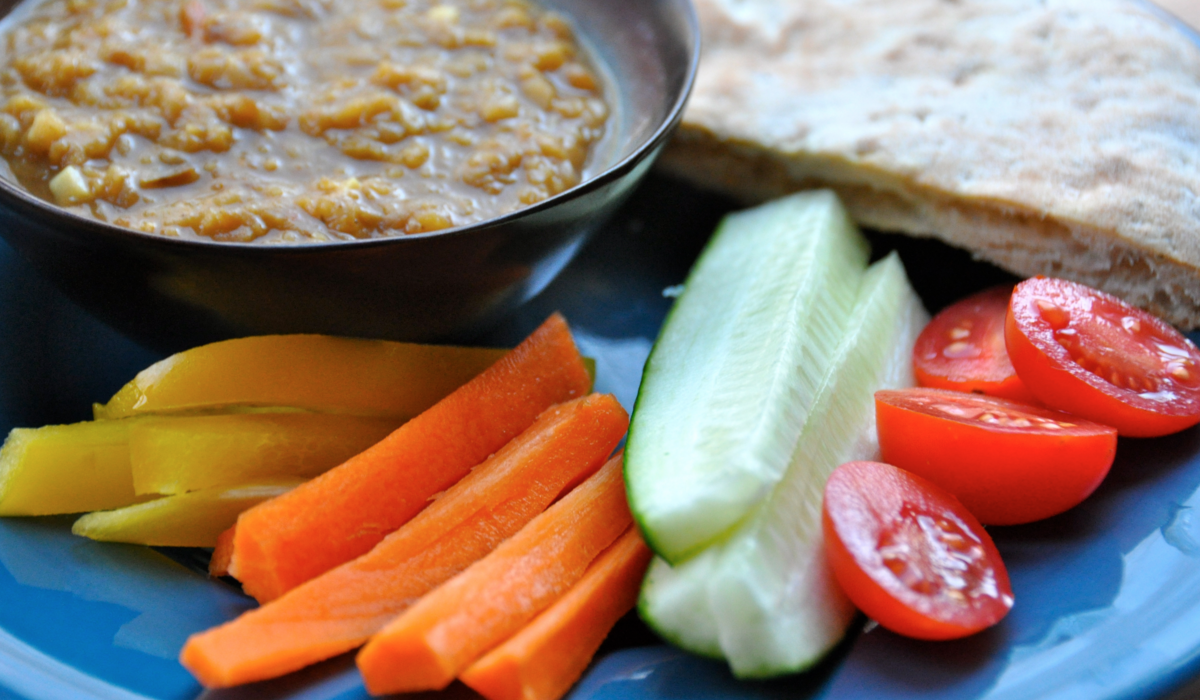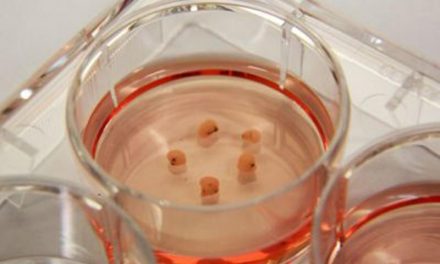(Note from Erin: I have found that lectins, a type of protein found in all forms of life, can be problematic for me so I mind just how much I eat. This is a good resource I hope you will find beneficial.)
In small amounts, they may provide several health benefits. However, larger amounts can reduce your body’s ability to absorb nutrients.
This article reviews six foods that are particularly high in lectins and explains how you can make sure they don’t reduce your nutrient absorption.
What Are Lectins?

Lectins are a kind of protein that can bind to sugar.
They’re sometimes referred to as antinutrients since they can reduce the body’s ability to absorb nutrients. Lectins are thought to have evolved as a natural defense in plants, essentially as a toxin that deters animals from eating the plants (1).
Lectins are found in many different plant- and animal-based foods, yet only about 30% of the foods you eat contain significant amounts (2).
Humans are unable to digest lectins, so they travel through your gut unchanged.
How they work remains a mystery, though research shows they bind to cells on the gut wall. This allows them to communicate with the cells, triggering a response.
In small amounts, lectins play important roles in body processes, including immune function and cell growth. Research shows they could even have a role in cancer therapy (3).
However, large amounts can damage the gut wall. This causes irritation that can result in symptoms such as diarrhea and vomiting. It can also prevent the gut from absorbing nutrients properly.
The highest concentrations of lectins are found in healthy foods like legumes, grains and nightshade vegetables. Luckily, there are several ways to reduce the lectin content of these healthy foods to make them safe to eat.
Research shows that by cooking, sprouting or fermenting foods that are high in lectins, you can easily reduce their lectin content to negligible amounts (4, 5, 6).
Below are six healthy foods that are high in lectins.
1. Red Kidney Beans

Red kidney beans are among the richest sources of plant-based protein.
They are also a great source of carbs that are low on the glycemic index (GI).
This means that they release their sugars more slowly into the blood, causing a gradual rise in blood sugar rather than a sharp spike (7).
They are also high in resistant starch and insoluble fiber, which can help with weight loss and improve general gut health (8, 9, 10).
Red kidney beans contain many vital vitamins and minerals, such as iron, potassium, folate and vitamin K1.
However, raw kidney beans also contain high levels of a lectin called phytohaemagglutinin.
If you eat them raw or undercooked, they can cause extreme nausea, vomiting, and diarrhea. As few as five beans can cause a response.
A hemagglutinating unit (hau) is a measure of lectin content. In their raw form, red kidney beans contain 20,000–70,000 hau. Once they’re thoroughly cooked, they contain only 200–400 hau, which is considered a safe level (4).
As long as they are properly cooked, red kidney beans are a valuable and nutritious food that shouldn’t be avoided.
Summary: Red kidney beans are high in protein and fiber. When cooked properly, they’re a healthy and valuable addition to the diet.
2. Soybeans

(As a woman, I’d make sure to do serious homework and research before I ate soybeans on a regular basis.) Soybeans are a fantastic source of protein. They are one of the highest quality plant-based proteins, which makes them particularly important for vegetarians (11).
They are a good source of vitamins and minerals, particularly molybdenum, phosphorus, and thiamine.
They also contain plant compounds called isoflavones, which have been linked to cancer prevention and a decreased risk of osteoporosis (12, 13).
Research shows soybeans can also help lower cholesterol and reduce the risk of developing obesity and type 2 diabetes (14, 15, 16).
However, soybeans are another food that contains high levels of lectins.
As with red kidney beans, cooking soybeans almost completely eliminates the lectins. Yet make sure you cook them for long enough at a high enough temperature.
Research shows that soybean lectins are almost completely deactivated when they’re boiled at 212°F (100°C) for at least 10 minutes.
In contrast, dry or moist heating of soybeans at 158°F (70°C) for several hours had little or no effect on their lectin content (17).
On the other hand, fermentation and sprouting are both proven methods of reducing lectins.
One study found that fermenting soybeans reduced the lectin content by 95%. Another study found that sprouting decreased the lectin content by 59% (5, 6).
Fermented soybean products include soy sauce, miso and tempeh. Soybean sprouts are also widely available, and can be added to salads or used in stir-fries.
Summary: Soybeans are a fantastic source of high-quality protein, vitamins, minerals and isoflavones. You can drastically reduce their lectin content by cooking, fermenting and sprouting them.
3. Wheat

Wheat is the staple food for 35% of the world’s population (18).
Refined wheat products have a high glycemic index (GI), which can cause your blood sugar to spike. They’ve also been stripped of virtually all nutrients.
Whole wheat has a similar GI, but it’s higher in fiber, which can have beneficial effects on gut health (19).
Some people have difficulty digesting gluten, a protein found in wheat. However, if you tolerate it, then whole wheat can be a good source of many vitamins and minerals, such as selenium, copper, and folate.
RELATED ARTICLES:
- Fat-burning, Gluten-Free, Sweet Potato Muffins You Can Eat for Breakfast
- Healthy, Delicious, Gluten-Free BLT Sandwich
Whole wheat also contains antioxidants such as ferulic acid, which has been linked to a reduction in heart disease (20).
Raw wheat, especially wheat germ, is high in lectins, with around 300 mcg of wheat lectins per gram. However, it appears that the lectins are almost completely eliminated by cooking and processing (21).
Whole-wheat flour has a much lower lectin content of about 30 mcg per gram (21).
When you cook whole-wheat pasta, it appears to completely inactivate the lectins, even at temperatures as low as 149°F (65°C). In cooked pasta, lectins are undetectable (21, 22).
Moreover, research shows that store-bought whole-wheat pasta doesn’t contain any lectins at all, since it’s usually exposed to heat treatments during production (22).
Since most whole-wheat products you eat are cooked, it is not likely that lectins pose a significant problem.
Summary: Wheat is a staple in many people’s diets. Whole-wheat products can provide many health benefits. Their lectin content is almost completely eliminated by cooking and processing.
4. Peanuts

Peanuts are actually classified as legumes and are related to beans and lentils.
They are high in mono- and polyunsaturated fats, making them a great source of energy.
They are also high in protein and a wide range of vitamins and minerals, such as biotin, vitamin E and thiamine.
Peanuts are also rich in antioxidants, and have been linked to health benefits like a reduced risk of heart disease and gallstones (23, 24, 25).
Unlike with some of the other foods on this list, the lectins in peanuts don’t appear to be reduced by heating.
A study found that after participants ate 7 ounces (200 grams) of either raw or roasted peanuts, lectins were found in their blood, indicating that they had crossed through from the gut (26).
One test-tube study found that peanut lectins increased growth in cancer cells (27).
This, alongside the evidence that peanut lectins can enter the blood stream, has led some people to believe that lectins could encourage cancer to spread in the body.
However, this study was carried out using high doses of pure lectins placed directly onto cancer cells. There are no studies as yet on the exact effects in humans.
So far, the evidence for peanuts’ health benefits and role in cancer prevention is far stronger than the evidence for any potential harm they might cause.
Summary: Peanuts are a great source of protein, unsaturated fats and many vitamins and minerals. Although peanuts contain lectins, evidence for their health benefits is far stronger than that for any risks.
5. Tomatoes

Tomatoes are part of the nightshade family, along with potatoes, eggplants and bell peppers.
Tomatoes are high in fiber and rich in vitamin C, with one tomato providing approximately 28% of the recommended daily intake.
They are also a good source of potassium, folate and vitamin K1.
One of the most studied compounds in tomatoes is the antioxidant lycopene. It has been found to reduce inflammation and heart disease, and studies have shown it may protect against cancer (28, 29, 30).
Tomatoes also contain lectins, though there is currently no direct evidence they have any negative effects in humans. The available studies have been on animals or in test tubes.
In one study on rats, tomato lectins were found to bind to the gut wall, but they didn’t appear to cause any damage (31).
Another study found that tomato lectins do manage to cross the gut and enter the bloodstream once they’ve been eaten (32).
Indeed, some people do appear to react to tomatoes, but this is more likely to be due to something called pollen-food allergy syndrome or oral allergy syndrome (33).
Some people have linked tomatoes and other nightshade vegetables to inflammation, such as that found in arthritis. So far, no formal research has supported this link.
Lectins have been linked to rheumatoid arthritis, but only for those who carry genes that put them at a high risk of the disease. The research found no link between rheumatoid arthritis and nightshade vegetables, specifically (34).
Summary: Tomatoes are full of vitamins, minerals and antioxidants, such as lycopene. There is no evidence that their lectin content has any significant adverse effects in humans.
6. Potatoes

Potatoes are another member of the nightshade family. They are a very popular food and are eaten in many forms.
Eaten with the skin, potatoes are also a good source of some vitamins and minerals.
They contain high levels of potassium, which has been shown to decrease the risk of heart disease. They are also a rich source of vitamin C and folate.
The skins, in particular, are high in antioxidants, such as chlorogenic acid. This compound has been associated with a reduction in the risk of heart disease, type 2 diabetes and Alzheimer’s disease (35).
Potatoes have also been shown to increase feelings of fullness, which can help with weight loss. That said, it is important to consider how they are cooked (36).
Potatoes are high in lectins that appear to be resistant to heat. About 40–50% of their lectin content remains after cooking (37).
As with tomatoes, some people report experiencing adverse effects when they eat potatoes. Animal and test-tube studies have shown that this could possibly be linked to lectins. However, more studies in humans are needed (38).
For the majority of people, potatoes do not cause any adverse effects. In fact, one study found that some varieties of potatoes were linked to a reduction in inflammation (39).
Summary: Potatoes are nutritious and versatile. Although they contain high levels of lectins, there is currently no evidence for any significant adverse effects in humans.
The Bottom Line
Only about a third of the foods you eat likely contain a significant amount of lectins.
These lectins are often completely eliminated by preparation processes such as cooking, sprouting, and fermentation. These processes make the foods safe, so they will not cause adverse effects in the majority of people.
Nevertheless, nightshade vegetables can cause problems for some people. If you’re one of them, you may see beneficial effects from limiting your intake.
All the foods discussed in this article have important and proven health benefits.
They’re also important sources of vitamins, minerals, and antioxidants. Currently, knowledge about their lectin content indicates there is no need to avoid them.
*Article originally appeared at Authority Nutrition.












